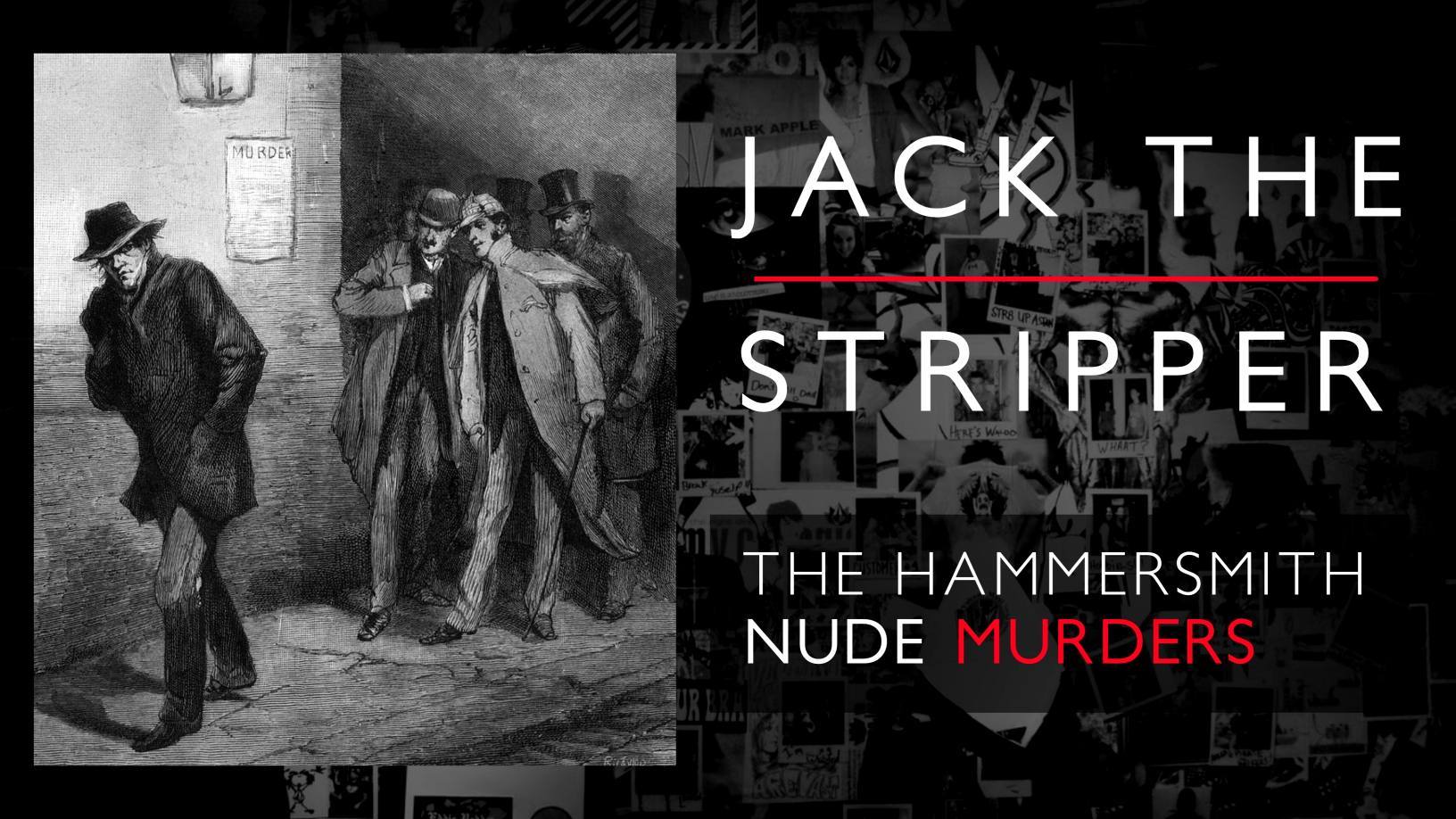Jack the Stripper was a copy cat killer who terrored London between 1964 and 1965, imitating the infamous London serial killer, Jack the Ripper. Jack the Stripper, however, did not have his role model’s insight into anatomy, he chose a modus operandi built on peeling off the clothes of his victims, dripping industrial paint on them, and at times putting their underwear into their mouths.

The only real similarities with Jack the Ripper were that it took place in London, went beyond prostitution and that the killer was not finally identified. That is why he is so famous.
Jack The Stripper
Jack the Stripper is a serial killer of London in the 1960s where still unknown many women are found dead naked. He killed between six and eight prostitutes, of which naked corpses were found around London or thrown into the River Thames. The murders are notoriously known as the “Hammersmith Nude Murders.”
Victims Of Jack The Stripper
The number of Jack The Stripper’s victims is not precise, because two of the murders do not correspond to his modus operandi. No one knew or see who is responsible for these gruesome crimes.
- Hannah Tailford, 30, was found dead on February 2, 1964 at Hammersmith Bridge. She was strangled and had lost several teeth. Except for the stockings, she was completely stripped.
- Irene Lockwood, 26, was found dead on April 8, 1964 on the bank of the Thames , not far from where Hannah Tailford was found. Their murders, along with that of Elizabeth Figg, were linked, and the police concluded they were the work of a serial killer. Kenneth Archibald, a 57-year-old guardian, confessed to this murder nearly three weeks later, but his confession was deemed unreliable, due to a discrepancy in his version of events with the finding of the victim.
- Helen Barthelemy, 22, was found dead on April 24, 1964 while passing through Brentford. His murder gave the investigators the first important clue: fragments of paint, used in the auto industry. Investigators assumed that the fragments probably originated from the killer’s workplace, so they focused their research on nearby factories.
- Mary Flemming, of Scottish origin, 30, her body was found on July 14, 1964 on a road in the Chiswick district , despite being meticulously patrolled by police. Again, on the body, fragments of paint were discovered. Some witnesses who lived nearby heard the noise of a car that was driving away shortly before the body was found.
- Frances Brown, a prostitute in Edinburgh for 21 years, had been seen alive for the last time October 23, 1964 by her friend, Kim Taylor, herself a prostitute, before his body was found a month later, on 25 November, on a passage in Kensington. Taylor gave the police a description of the car she’d given Brown a ride: either a Ford Zephyr or a Ford Zodiac .
- Bridget O’Hara, 28, of Irish descent, also known as “Bridie”, was found dead behind the Heron Trading Estate, in a storage shed. Again traces of paint were found. The body had signs of storage in a warm place, probably it had been kept in an electrical transformer room.
Alleged Victims
- Elizabeth Figg, 21, was found dead on June 17, 1959 , five years before the killings of Jack the stripper, in Chiswick near the Thames. The circumstances of his death were believed by some to have many similarities to those of the other victims, including body position, and death by strangulation.
- Gwynneth Rees, 22, was found dead in a garbage heap on November 8, 1963. Again, investigators assumed that Rees might be a victim of Jack the stripper, as his body was found near the Thames, strangled with a rope and lost some teeth.
Suspects
Just like Jack the Ripper. There’s too many suspects and the case is still unsolved. The police has tried to find the murderer without any success. The murderer was nowhere to be found. Suspects included Mungo Ireland, a security guard from Scotland.
Ireland began to be suspected after the murder of Bridget O’Hara, when it was discovered that the found paint the victim’s body came from the firm where he worked as a security guard, the Heron Trading Estate. Shortly thereafter, however, Ireland succumbed to poisoning himself with carbon monoxide. Later it has been proven that at the time of O’Hara’s murder he was actually in Scotland.
Later, Freddie Mills, a boxer very famous in the United Kingdom at the time, was suspected to be the killer without any conclusive evidence. After that, the name of Harold Jones, a Welshman already convicted of the murder of two girls, killed in 1921 in his hometown, Abertillery, was put forward for being Jack the Stripper.
Being only 15 at the time of the double murder, Jones had been sentenced to life in prison instead of the death penalty. 20 years later, in 1941, he had been released for good behavior and had first returned to Abertillery, where he had visited the graves of his 1921 victims.
Finally, in 1947, he moved to London, in the Fulham neighborhood, he married and had a daughter. All the Stripper’s crimes had similar characteristics to the two murders committed by Jones in 1921: the victims had not suffered sexual violence, but the killer had raged on them with extreme violence. However, given the limited chance the police at the time had of crossing the data, Jones had never been deemed a possible suspect by Scotland Yard.
Conclusion
To this day, “Jack the Stipper” has been remained an unanswered question from the crime world. Despite “intense media interest and one of the biggest manhunts in Scotland Yard’s history” the case is unsolved. All forensic evidence gathered at the time is believed to have been destroyed or lost.



